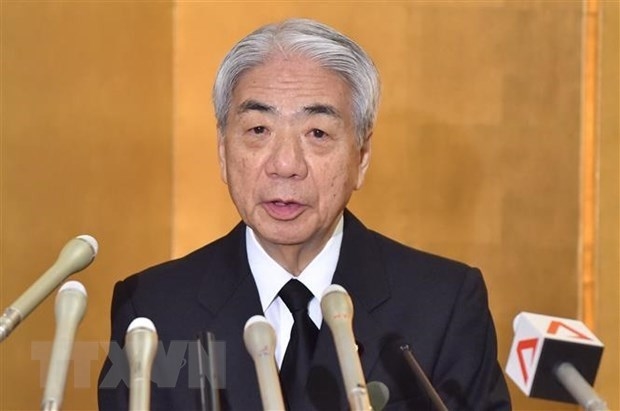 |
| President of the House of Councillors of Japan Otsuji Hidehisa (Photo: AFP) |
The visit takes place in the context that the two countries are celebrating the 50th anniversary of the bilateral diplomatic ties (September 21, 1973-2023) with many significant activities being held.
Over the past five decades, the framework of bilateral relations has upgraded from "reliable, stable and long-term partnership” in 2002 to "towards a strategic partnership for peace and prosperity in Asia" in 2006, and "strategic partnership for peace and prosperity in Asia" in 2009, and "extensive strategic partnership for peace and prosperity in Asia" in 2014.
Regular visits and meetings of the two countries’ leaders on the sidelines of global and regional conferences have contributed to strengthening their trustworthy relationship, setting major orientations to the effective development of bilateral relations across the board.
As one of Vietnam's top important economic partners, Japan was the first G7 country to recognise Vietnam's market economy status in October 2011.
Two-way trade has been steadily increasing over the years, reaching 40 billion USD in 2020, 42.7 billion USD in 2021, 47.6 billion in 2022 and 24.9 billion USD in the first seven months of this year. Vietnam mostly exports vehicles and spare parts, machinery and equipment, wood and wooden products, aquatic products; computers, electronics and components to Japan while importing machinery, spare parts and equipment. The two countries have granted the most favoured nation (MFN) status to each other since 1999.
In terms of investment, Japan is the third largest foreign direct investor in Vietnam, following the Republic of Korea and Singapore, with 5,143 active FDI projects worth over 71.2 billion USD as of July 2023.
Japan is also the biggest supplier of official development assistance (ODA) to Vietnam, accounting for around 30% of the total funding from foreign donors to the country. Japan's ODA to Vietnam has amounted to 29.3 billion USD, 1.8 billion USD of which was non-refundable aid.
Apart from economic and trade cooperation, the two countries have also worked effectively together in various areas, including culture, education and training, health care, tourism, locality-to-locality cooperation and labour.
Japan is one of the biggest non-refundable aid suppliers to Vietnam's education and training sector. Both countries inked a number of agreements in this field.
Among the top 10 foreign arrivals in Vietnam in the first five months of this year, Japan was one of the four high-growth Northeast Asian markets, alongside the RoK with over 1.3 million visitors, China 399,000, and Taiwan (China) 252,000 visitors.
Currently, there are roughly 500,000 Vietnamese people living, working and studying across all 47 cities and prefectures of Japan, predominantly in Aichi, Tokyo, Osaka, Saitama, Chiba, and Fukuoka prefectures.
The upcoming Vietnam visit by the Japanese official is also expected to contribute to further consolidating and deepening bilateral extensive strategic partnership./.